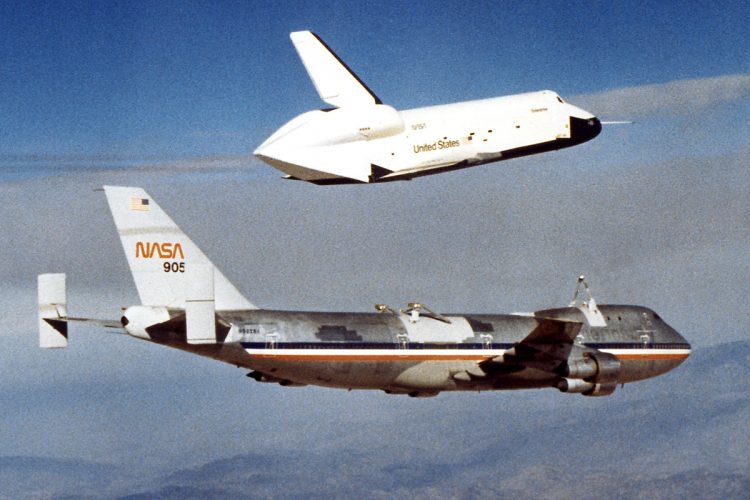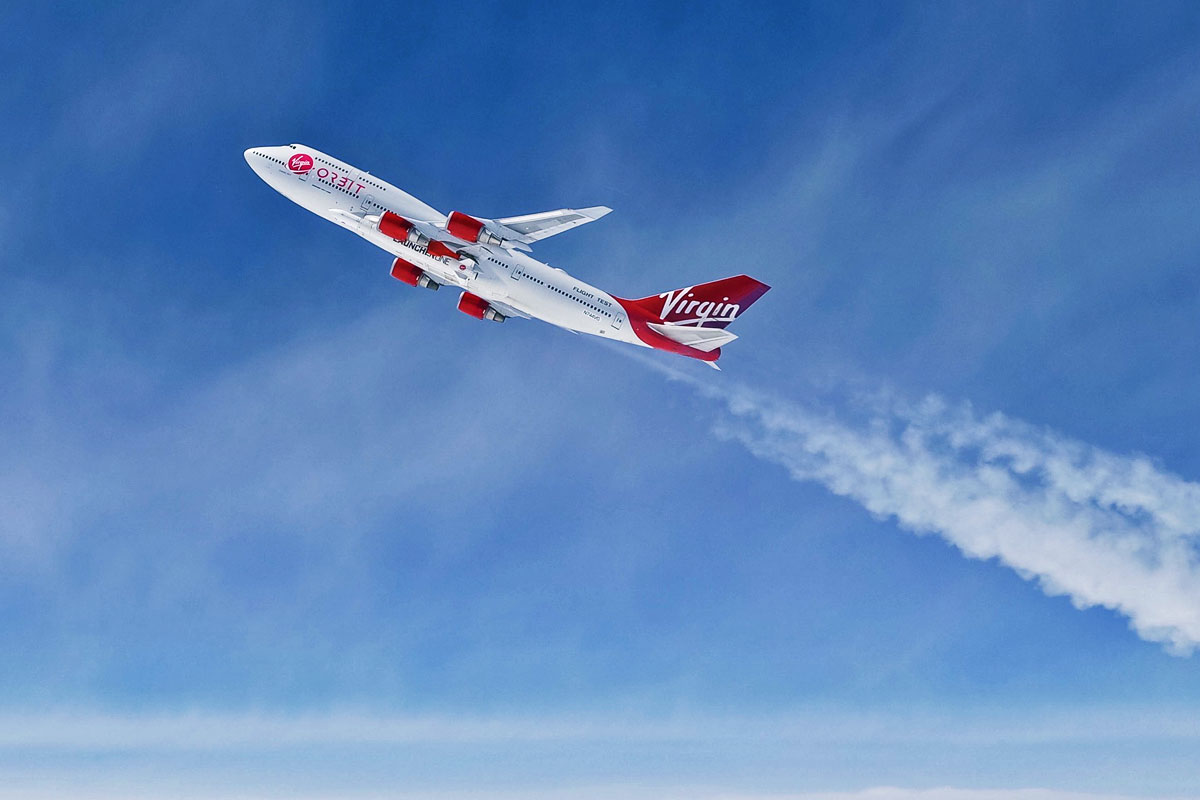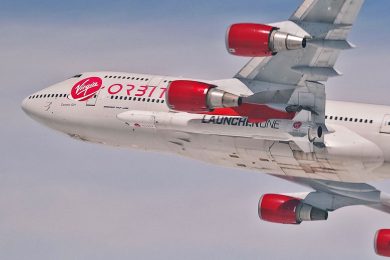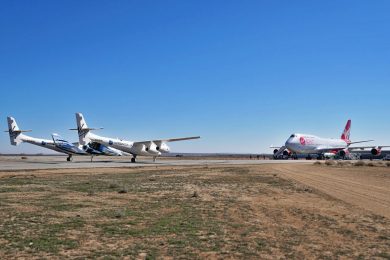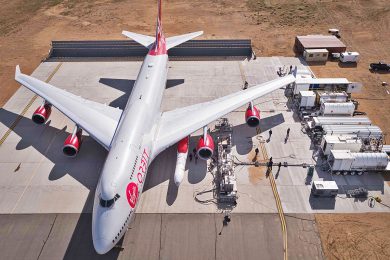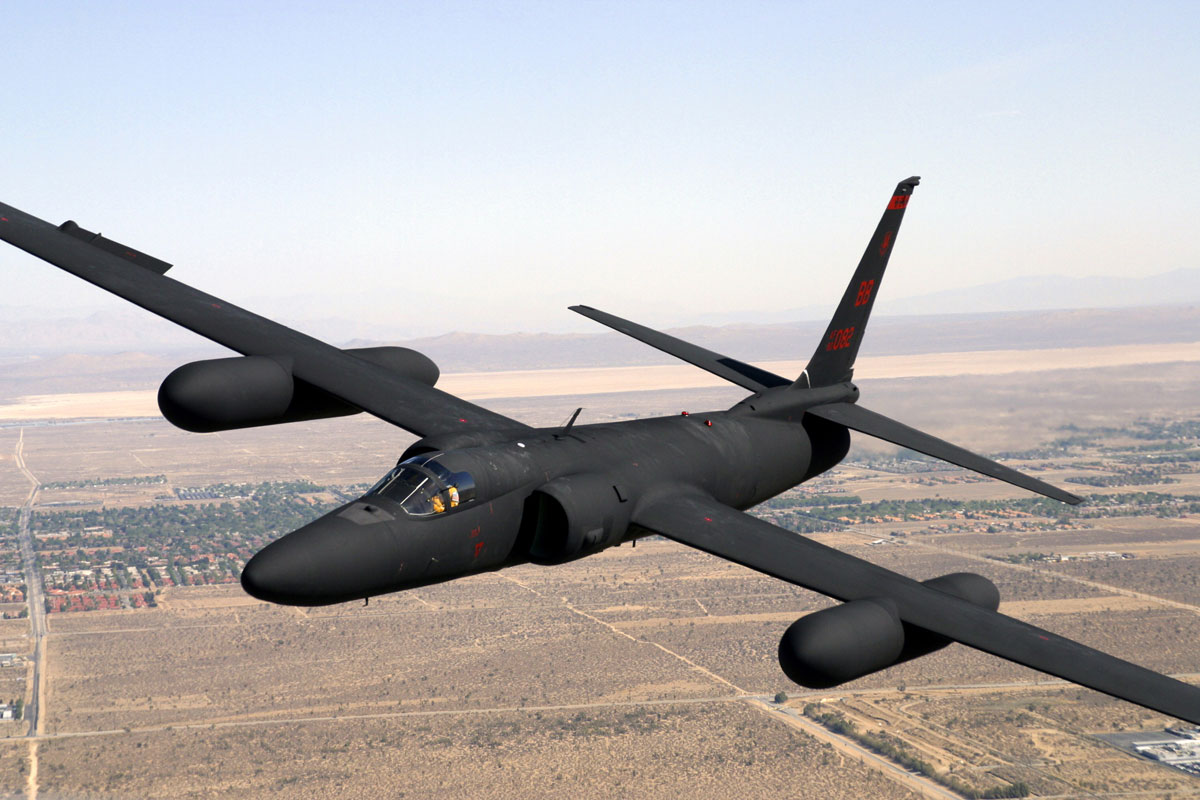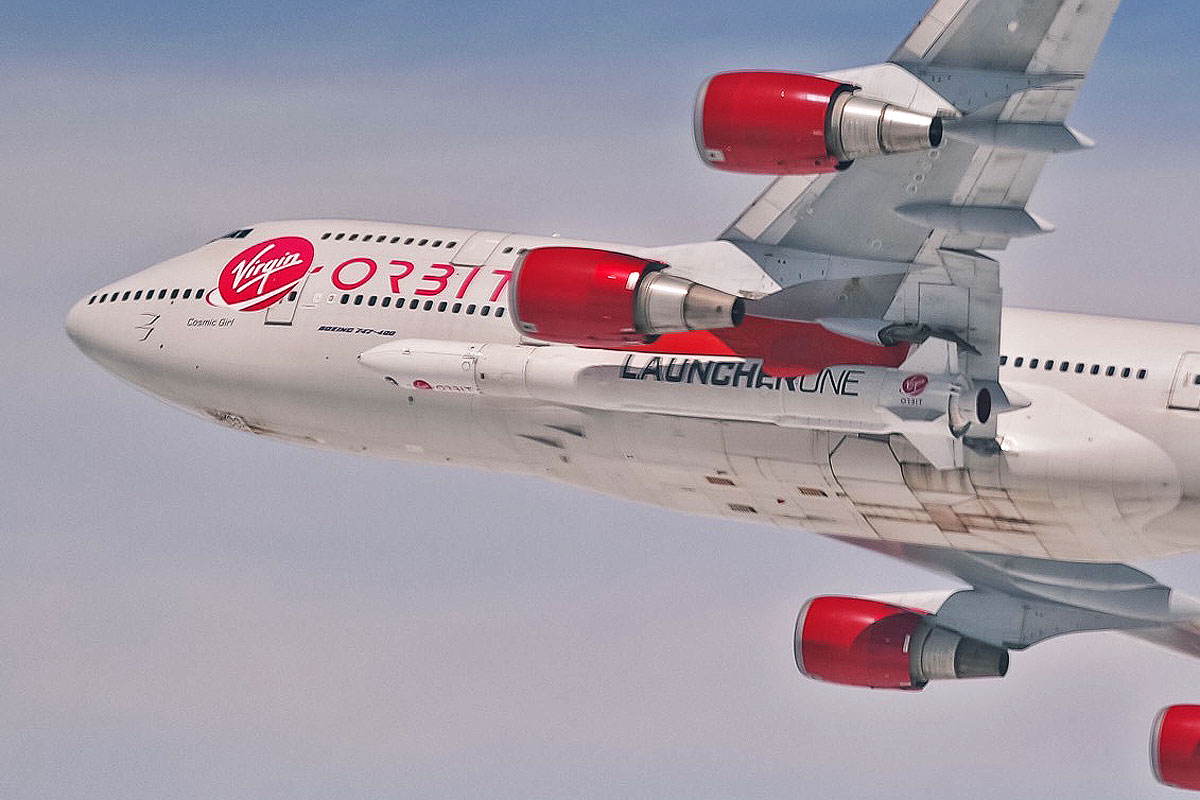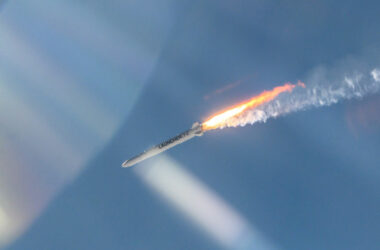Virgin Orbit completed this Sunday another stage of the launch program for small satellites by completing a captive carry test flight with the Boeing 747-400 “Cosmic Girl” and the LaunchOne rocket up to 35,000 feet in altitude.
The flight, which took off from the Mojave Air and Space Port in California, lasted about 2 hours and was carried out with the rocket fueled with RP-1 fuel and liquid nitrogen instead of liquid oxygen, for safety reasons.
The test consisted of simulating the launching maneuvers of the LaunchOne in flight, which is carried under the left wing of the 747 and released at a pronounced angle to position the rocket before it starts its engine.
With the capacity to carry up to 880 lbs (400 kg) of payload, the Cosmic Girl replaced Virgin’s original plan, which intended to use WhiteKnightTwo in this role. However, the two-fuselage aircraft responsible for launching the SpaceShipTwo spacecraft on suborbital travel flights would not be able to transport very large space artifacts, limiting its commercial potential.
When billionaire Richard Branson decided to separate Virgin Galactic’s satellite launch program and create the Virgin Orbit subsidiary in 2017, the 747-400 that was used on the airline ended up being passed on to the new company.
Despite the success of the flight, Virgin Orbit does not make estimates about the first launch, previously scheduled for the beginning of 2020. The reason is the coronavirus, which caused his team to be released from work and remains at home receiving his entire salary at the same time the company announced that it is manufacturing ventilators to help fight the pandemic.
Space Jumbo
In the space race promoted by private companies, Virgin is one of the most active, along with SpaceX, of another famous entrepreneur, Elon Musk. Virgin Orbit intends to offer satellite launches at a very low cost, estimated at just $ 12 million.
The technology employed by the company, however, is not new. The first rocket to be launched from the air by an aircraft was the Pegasus, developed by Orbital Sciences, now part of Northrop Grumman.
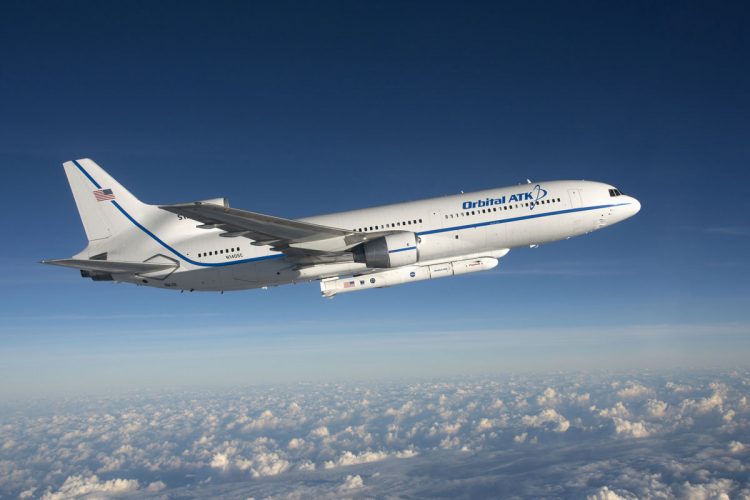
The first launch of the Pegasus took place in 1990 from a B-52 bomber, but a few years later the company started using a Lockheed L-1011 Tristar adapted and named Stargazer. Another 43 launches have been made since then, the most recent of which in October 2019.
Another space startup, Stratolaunch, had partnered with Northrop Grumman to launch the Pegasus from the massive six-engine plane that flew only once in 2019, but the company’s new owner recently decided to shift the focus of business.
For the Boeing 747, it is a return to its origins, when it served as an aerial platform to transfer the Space Shuttle between the bases used by NASA. In that case, however, Jumbo did nothing more than drop the spacecraft in flight to test its gliding ability.
